To supply carotenoids to salmonid and crustacean producers, natural pigment sources are growing
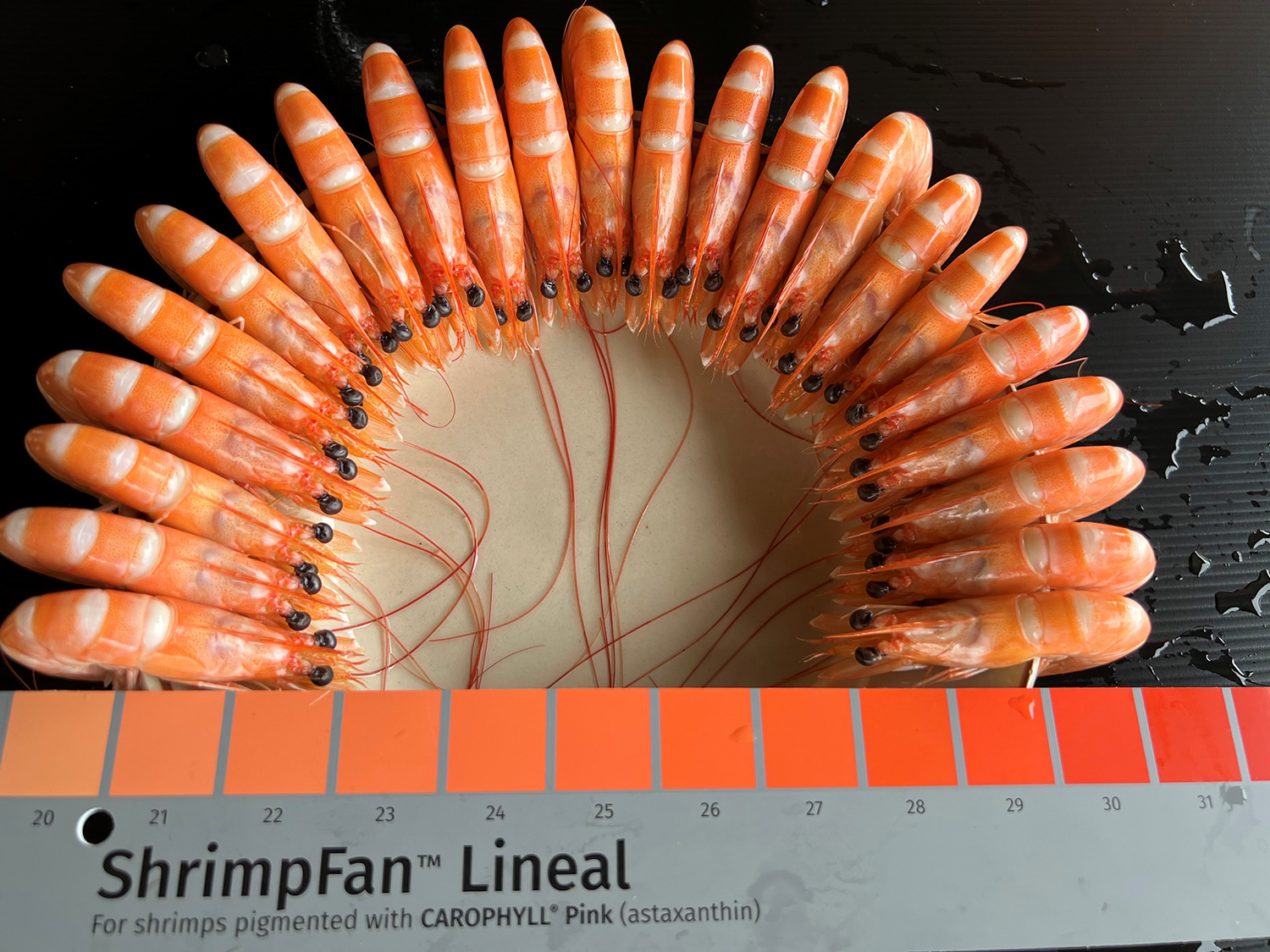
Following reports that the color of farmed salmon could be becoming paler, researchers believe that the same phenomenon is occurring in shrimp. As shrimp farms look to increase productivity and profitability, the level of intensification has been rising with higher stocking densities in production systems and shrimp made to grow faster. This reduces the ability of natural productivity to meet the nutritional needs of shrimp and results in undesired effects, including poor pigmentation.
Chee Kiat Ng, head of business development at JF Nutritech in Kuala Lumpur, Malaysia, is working with a carotenoid-based feed additive for shrimp derived from palm oil.
“Pigmentation is crucial for shrimp,” he told the Advocate. “When they molt, they discard a lot of the pigments that are stored in their shell. This means that they need sufficient levels of carotenoids within their tissue to maintain the same level of pigmentation in their new shell. Unfortunately, however, their color is fading, particularly in farms with very high stocking densities. Indoor systems can also result in poor color, as can low-salinity systems where the shrimp might molt more frequently.”
In the past, shrimp culture system practices were kept at extensive or semi-intensive levels, with natural foods rich in astaxanthin available to the animals, according to Chiow Yen Liew, regional marketing manager for Asia Pacific at health and nutrition firm DSM. Today, however, most commercial shrimp farms are operated in intensive or super-intensive systems, which exposes the animals to higher stress due to stocking density, growth performance (molting stress), osmoregulation stress and increased incidence of disease.
“The changing environment in which shrimp are cultured, such as increased water transparency, increased culture (nutrient imbalance), genetic factors, molting frequency and feed composition can all lead to changes in pigmentation,” said Liew.
Dominique Corlay, director of Aquaculture Natural Solutions in Coëtmieux, France, agrees with Liew that stress during farming or harvesting induces a loss of pigmentation intensity. Other causes of poor pigmentation include preservation and storage conditions. For example, the icing of uncooked shrimp and its transportation – if the distance between a farm and processing plant is long, the color can be affected. Poor feed quality is another issue, he said, particularly if the feed doesn’t contain enough carotenoids, which have proven benefits on color, growth performance and health in the two most farmed shrimp species – whiteleg shrimp (Litopenaeus vannamei) and black tiger prawns (Penaeus monodon).
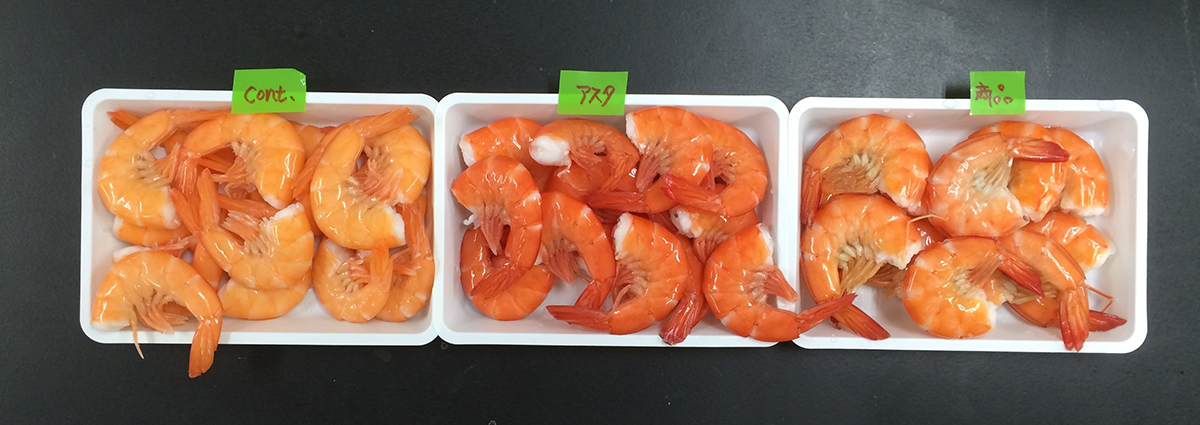
The most significant carotenoid in determining the color of shrimp is astaxanthin, a highly effective antioxidant that also gives farmed salmon its pink color. Astaxanthin not only brings about the exuberant red hue when shrimp are cooked, but also acts as a key nutrient to sustain health, enhance stress resistance, improve well-being, growth and survival rates, and support gonad development and immune function. Compared to other antioxidants such as Vitamins C and E, it is stronger and more potent, making it a good source of pigment for shrimp.
In order to supply antioxidants and red carotenoids to species like salmonids and crustaceans, natural pigment sources such as Panaferd® are growing significantly. Made by fermenting the marine microorganism Paracoccus carotinifaciens, Panaferd® offers the same source of carotenoids as in nature and is produced free of chemical antioxidants or GMOs. It also provides high levels of proteins – almost 50 percent, said Corlay, who recently introduced the benefits of Panaferd at World Aquaculture Singapore 2022.
“Fish and crustaceans in the wild need carotenoids to survive and the only organisms that can synthesize carotenoids are algae, fungi and bacteria like the Paracoccus carotinifaciens,” said Corlay. “This is one of the components at the start of the food chain in the aquatic environment and produces one of the highest concentrations of carotenoids, including astaxanthin. In aquaculture, shrimp can metabolize some beta-carotene to astaxanthin, but this amount is limited from their diet, resulting in a pale color. This is where Panaferd can be added. Astaxanthin improves color – it’s a proven antioxidant and it enhances major immunity parameters in shrimp.”
The color of salmon: How fish farmers can add value by focusing on pigmentation
Ng points out that color is critically important downstream in the shrimp supply chain because of its direct visual impact. Better prices can be had for stronger-colored shrimp, he says, particularly in countries such as China where consumers are prepared to pay more for shrimp with enhanced coloration and where the color of imported shrimp is monitored frequently. In countries where the processing industry is mature, color is already a significant criterion for shrimp pricing. This is evident in Thailand, for example, where shrimp with desirable color can command a premium of between THB10 and THB30 (25 to 75 cents) per kg.
“As consumers gain more insight into pigmentation and how it affects shrimp quality and health, there will be greater demand for shrimp with a brighter color,” said Ng. “Farms could maintain such a color if the market can identify the criteria expected from farmed shrimp and provide solutions on how farms can meet these criteria. Farmers already plan their production to enable the maximum margins for their operations based on local market demands.”
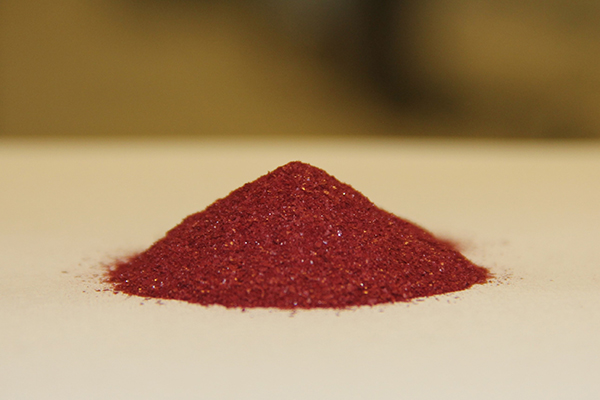
Liew believes that farmers should work closely with the further-downstream parts of the value chain, not only to market their product, but also to understand what can be done to maintain color and add value to their production. In addition to improving preservation techniques and transportation logistics, farms could also explore the potential and return on investment from good pigmentation, while the shrimp value chain needs to work together to ensure that the value of good pigmentation and other positive traits in shrimp are translated to each stakeholder, from farmers and feed mills to suppliers. Looking beyond color to nutritional value, flesh quality and taste, and communicating the benefits and value of the average shrimp will also be important.
“Shrimp farms need a pigmentation strategy that fits industry stakeholder needs and delivers consistency,” said Liew. “Farms must make sure that when they feed shrimp, they can meet the desired color targets. Shrimp can be sent for laboratory testing to analyze astaxanthin levels in the muscle, shell, eye or cephalothorax. A lot of scientific information can help a farm optimize and reach its desired color. Meanwhile, shrimp that are enriched in astaxanthin can be a unique source of antioxidants and anti-inflammatory nutrients, not to mention good for your health and low in fat. Increasing awareness toward this will also help with better pricing.”
“The nutritional quality of shrimp can be improved with increased carotenoids and fat-soluble vitamins that are supplemented in shrimp feed with refined palm oil,” added Ng. “Designing feed to meet the nutritional needs of shrimp for a specific production system will allow for more specialization of shrimp products in the market.”
Follow the Advocate on Twitter @GSA_Advocate
Now that you've reached the end of the article ...
… please consider supporting GSA’s mission to advance responsible seafood practices through education, advocacy and third-party assurances. The Advocate aims to document the evolution of responsible seafood practices and share the expansive knowledge of our vast network of contributors.
By becoming a Global Seafood Alliance member, you’re ensuring that all of the pre-competitive work we do through member benefits, resources and events can continue. Individual membership costs just $50 a year.
Not a GSA member? Join us.
Author
-

Bonnie Waycott
Correspondent Bonnie Waycott became interested in marine life after learning to snorkel on the Sea of Japan coast near her mother’s hometown. She specializes in aquaculture and fisheries with a particular focus on Japan, and has a keen interest in Tohoku’s aquaculture recovery following the 2011 Great East Japan Earthquake and Tsunami.
Tagged With
Related Posts
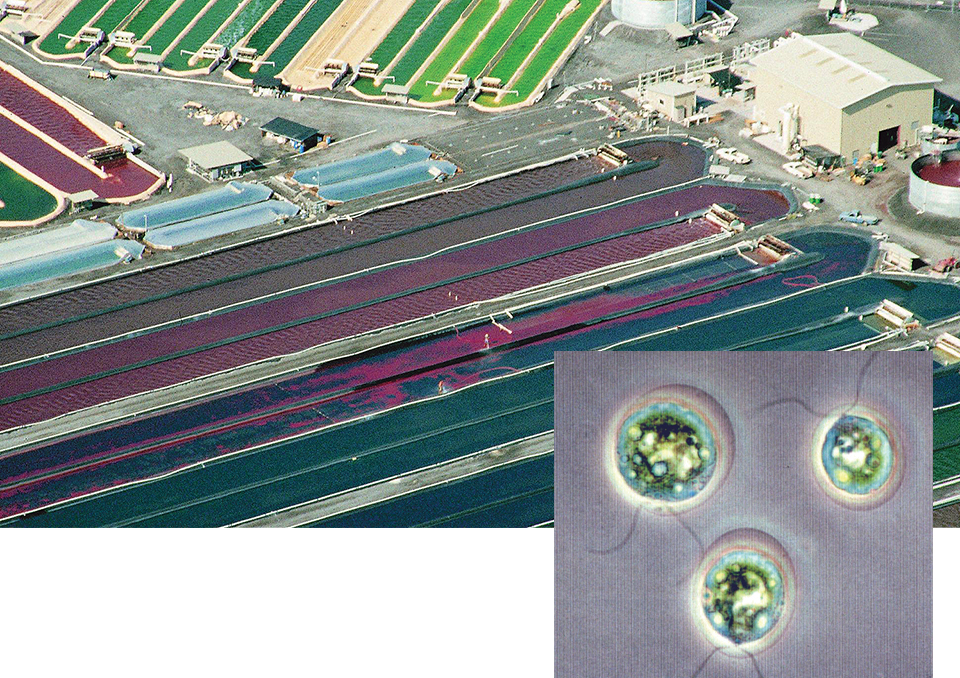
Aquafeeds
Astaxanthin: Feed supplement enhances pigmentation, health
Dietary carotenoids maintain optimal pigmentation and health benefits in cultured aquatic animals. Researchers consider astaxanthin an essential nutrient.
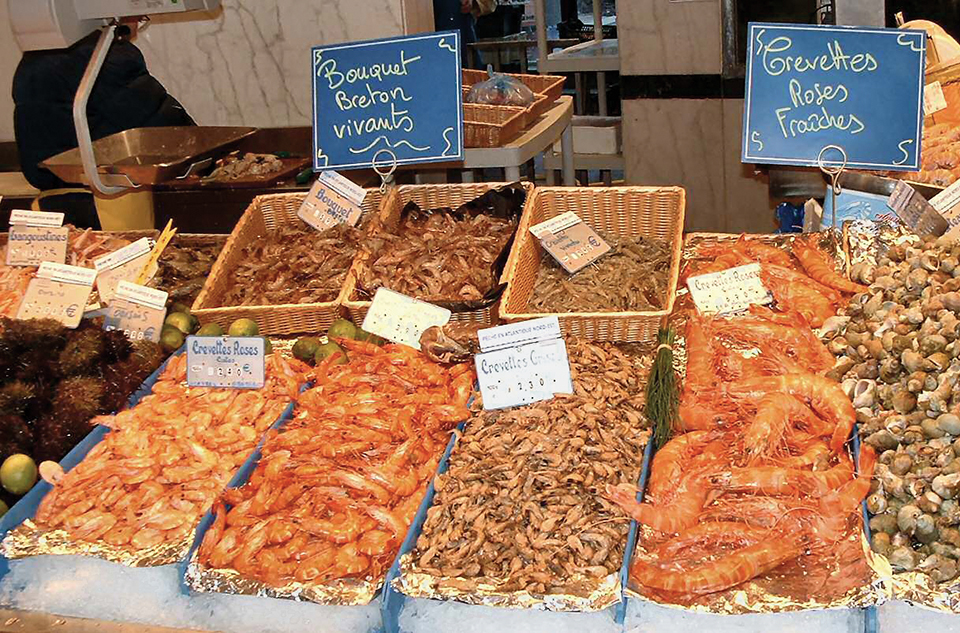
Health & Welfare
Alfalfa concentrate: natural shrimp color enhancer
Adding alfalfa concentrate containing natural carotenoids and pigments to the finishing diets of shrimp can enhance coloration of shrimp after cooking.
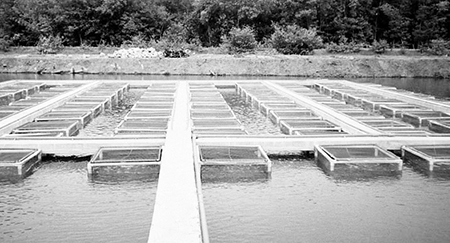
Health & Welfare
Carotenoid supplements and WSSV
The effectiveness of carotenoid supplements will depend upon the severity of infection and other stress factors that affect the condition of the shrimp.
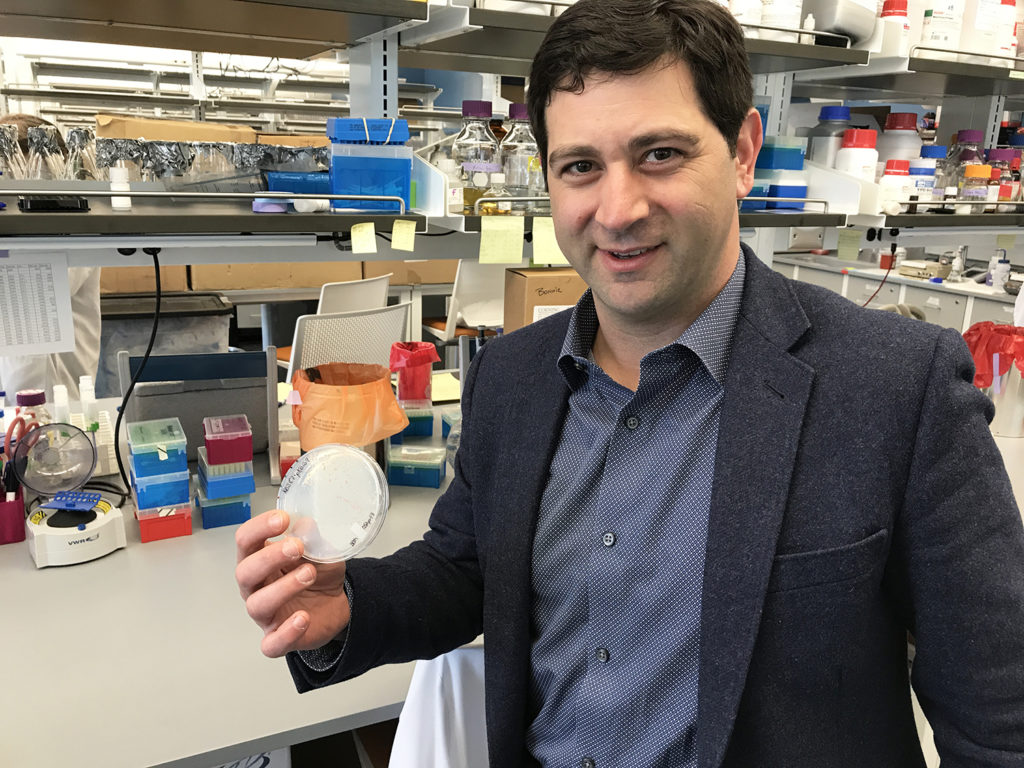
Aquafeeds
The pink powder that could revolutionize aquaculture
KnipBio, a Massachusetts-based biotechnology startup founded in 2013, is refining the manufacturing process for a promising aquaculture feed ingredient that may one day form the foundation of the food that farmed fish eat.


